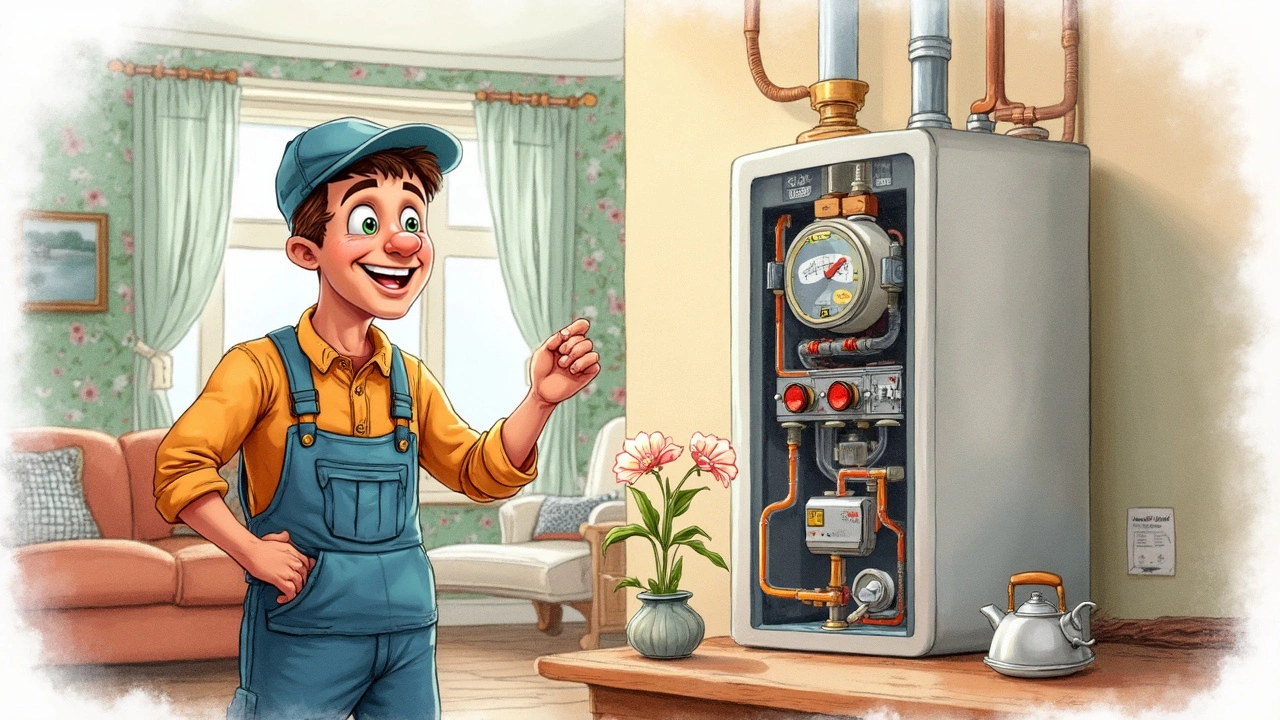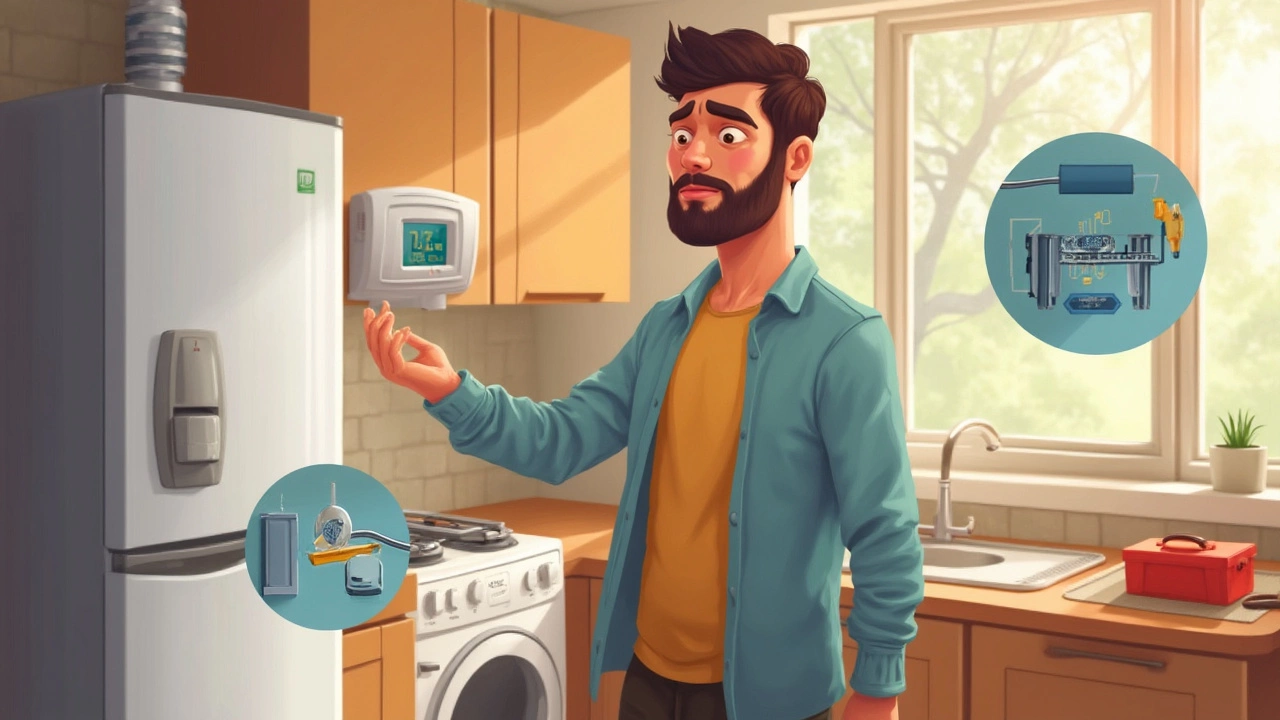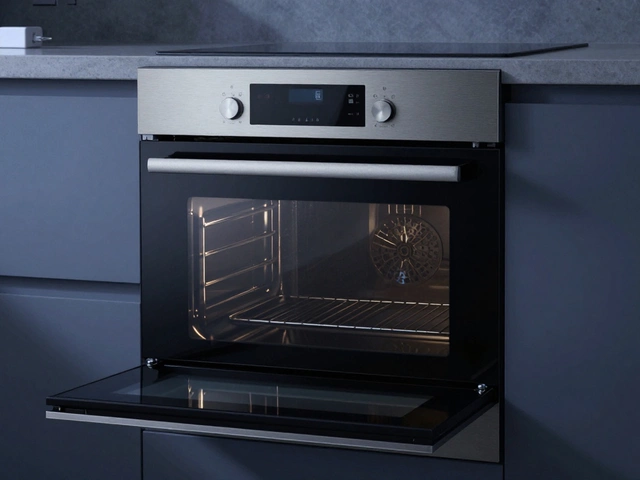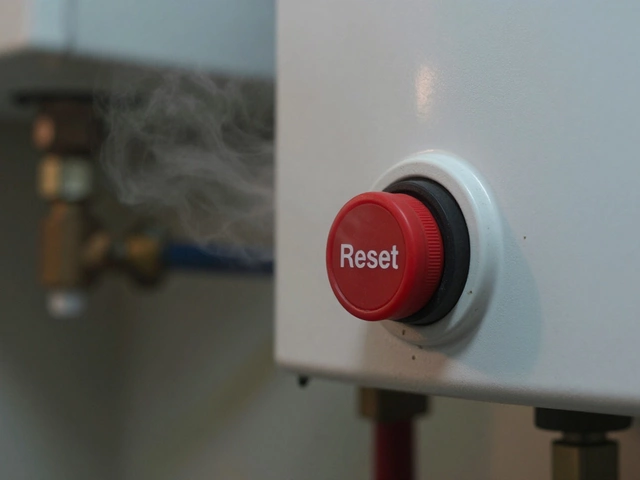Ever jumped into the shower only to be greeted by a blast of icy water? It’s a shocker, right? A water heater’s job is pretty straightforward: heat water. But when it stops doing that, it’s time to figure out what's going wrong. Let’s see if we can sort it out before calling in the cavalry.
First off, a lot of the time it’s something super simple. Check the thermostat on your heater. Sometimes it gets accidentally turned down or even fully off. Give it a look and make sure it’s set to the right temperature. A setting of around 120°F is usually recommended for good balance between comfort and efficiency.
Common Causes of Cold Water
Finding your water heater suddenly serving up cold water can really ruin your day. There are a few usual suspects to consider that might explain why this is happening. Let's dive into some of the water heater troubleshooting steps that can give you clues about what's gone wrong.
First up, there's the thermostat. Much like a referee in a game, if it's not set right, things get messy. If the thermostat is set too low, your water won't get hot enough because it’s telling your heater to take a chill pill. You can quickly check and adjust it to the recommended 120°F mark to see if that resolves the problem.
Next is the heating element, which is basically the heart of your electric water heater. This element heats the water, and if it burns out, guess what? No heat, no hot water. You can test the element using a multimeter; it should show continuity. If not, it needs replacing.
Don't forget about the circuit breaker! It's sneaky but sometimes a simple tripped breaker is the culprit, making the heater seem broken. Just have a quick sweep of your electrical panel, ensuring all breakers are in the correct position. A quick reset might just bring back the warmth.
Sometimes, sediment build-up is the villain. Over time, minerals from your water can settle at the bottom of the tank, insulating the water from the heater elements. This not only leads to cold water but can also harm the tank. Regular flushing of your heater could prevent this gunk from messing things up.
Here's a quick glance at how often certain problems pop up:
| Problem | % Occurrence |
|---|---|
| Thermostat Issues | 35% |
| Heating Element Failure | 30% |
| Circuit Breaker | 20% |
| Sediment Build-up | 15% |
Addressing these problems might just save you a service call and keep your showers steamy.
Quick Fixes You Can Try
If you're stuck with a cold water heater, don't panic just yet. You can try a few pretty straightforward fixes before throwing in the towel and reaching for the phone. Let's walk through some steps that might just save your day.
First, check your breaker box. A tripped breaker is a super common issue for electric water heater repair. Find the switch labeled for the water heater. If it's flipped, just switch it back, and wait a bit to see if things heat up.
Next, if your water heater has a reset button, give it a press. It’s usually a red button on the upper thermostat behind a metal panel. Make sure the power is off before you open it up. Press that reset button, close it back, and turn the power on to see if water starts to heat up.
You could also check the water heater's thermostat settings. If someone fiddled with it, the temperature might be too low. Set it to around 120°F or according to your preference and let it chill, or in this case, heat up for a bit.
Don't forget to check the pilot light if you have a gas water heater. If it's out, relight it according to the manufacturer’s instructions. Keep safety in mind and if you smell gas, don’t hesitate; call in a pro.
If your water heater still isn't behaving, the issue might be a faulty heating element. It's a bit more technical, so if you’re not feeling comfortable handling components, calling a professional is a good move.
These quick fixes can often do the trick, getting your water back to toasty. But if none of these steps help, consider it time well spent looking into this section before investing in the next step.

When to Call a Pro
So, you’ve tried everything, and your water heater is still giving you the cold shoulder? It's probably time to call in a professional before it drives you up the wall.
One sure sign you need a pro is if you've checked the thermostat and heating elements, and everything seems fine but you're still getting cold water. At this point, it could be something more technical, like a blown fuse or a malfunctioning circuit. Electrical issues are best left to experts to avoid accidents. Also, if you notice water pooling around your heater, call for help immediately, as this might mean a leak or tank failure.
Age is another consideration. Water heaters are typically designed to last about 10-15 years. If yours is reaching the tail end of its life span, and repair costs are stacking up, a professional might suggest it's time for a replacement.
Water heater troubleshooting can save you a lot of money if you catch issues early, but knowing when to call a pro can prevent small problems from becoming expensive disasters. When in doubt, don’t hesitate to reach out to a trusted technician.
Maintaining Your Heater
Keep your water heater running like a champ with some regular maintenance. It's like getting a tune-up for your car—simple but makes a world of difference. Here’s how you can extend the life of your trusty heater.
First, flush your heater once a year. Sediment and minerals build up over time. This gunk can reduce efficiency and even cause your heater to make weird noises. Just connect a hose to the drain valve, direct it to a safe draining spot, and let that water flow until it's clear.
Check the pressure relief valve every few months. It's a simple safety measure to avoid any pressure build-up disasters. Just lift the valve handle and let it snap back. If water isn't released and refills properly, it might be time to replace the valve.
Give a glance at the anode rod every three to five years. This metal stick is inside your water heater to prevent rusting. If it’s less than half an inch thick or coated with calcium, swap it out. Trust me, it’s easier than fixing a corroded tank.
- Adjust the thermostat to save on energy. Keeping it at 120°F is ideal. This setting saves energy and helps prevent scalding, too.
- Insulate your heater tank and exposed pipes. Especially if they’re located in a chilly place like the garage or a drafty basement. This is an easy way to save energy and keep the heat consistent.
Finally, always be on the lookout for leaks or unusual noises. These can be early signposts for bigger problems down the road. If something seems off and your DIY attempts don’t work, don’t hesitate to call in a pro.





